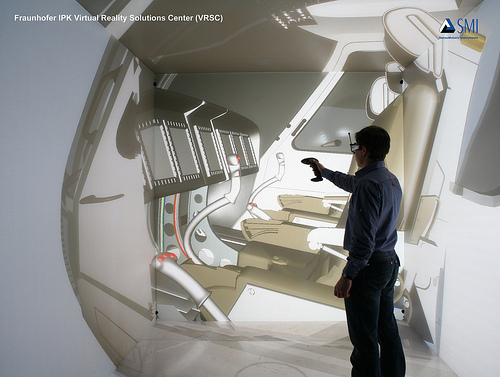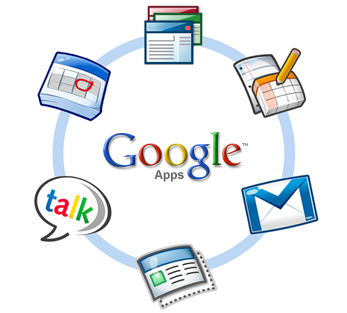
Virtual reality isn’t virtual any more: VR has arrived. Facebook’s $2 billion purchase of VR developer Oculus VR – producers of Oculus Rift – last year signalled a tectonic shift in the VR sector. With that sort of cash injection VR now has the impetus it needs to make serious headway (no pun intended) in the mainstream.
It is the sort of war chest that allows developers not only to develop their ideas but also to market and publicise them as well. In today’s trend-sensitive space, that is an important step forwards. Around the time of the aformentioned £2 billion deal, Facebook owner mark Zuckerberg explained it as a long term project: “At this point we feel we’re in a position where we can start focusing on what platforms will come next to enable even more useful, entertaining and personal experiences,” he explained in an extensive status update.
That ‘what comes next’ imponderable is maybe not as far off as many imagine. 2015 looks like being the year when VR really takes off. First of all this is because Oculus is not the only game in town. For example, the week before the Facebook announcement Sony introduced its spookily titled Project Morpheus to the waiting world. Launched as a prototype matched to the Playstation 4, the Morpheus launch may have been as much about PR as VR – at least in the short term – but it was nonetheless another signal that the industry is now fully behind the idea of VR as a viable commercial proposition.

Following the crowdfunding model laid down by Oculus VR Irish start-up Immersive VR Education is seeking €30,000 (£22,000) on the Kickstarter website to generate the means to realise its plans to bring its educational Apollo 11 re-enactment app. The package uses original footage and audio from the 1969 moon landing as part of an immersive educational package that places the user/learner at the heart of the moon landing process. There is already a prototype demo on the Oculus Rift VR headset. If the funding appeal is successful Immersive VR Education intend to expand the prototype into a full app with more detailed models, animated avatars and additional interactive features. These will include interviews with members of the original Apollo crew.
The educational tack explored in this idea is one removed from the bulk of investment aimed at VR which has tended to be geared more towards the existing leisure and entertainment sectors. Plans to commercially exploit VR’s immersive potential largely focus on bridging the divide between gaming and cinema.
There is obvious appeal for the immersive potential that VR can bring to both of these areas. Indeed, Oculus has been quick to use its new found wealth to establish a new division geared specifically towards the production of animated film. The new venture goes under the title of Story Studio.
The company has already rolled out its first production – a four minute short entitled Lost – which debuted at the Sundance Film Festival last year and with staff drafted in from Pixar, Industrial Light and Magic, they are energetically pressing ahead with further scripts.
Oculus were by no means the only VR pioneers at the Sundance Festival where flight simulators, monster movies and documentaries were amongst the represented genres. In fact 11 of the 14 projects that were presented in the festival’s New Frontier Showcase involved use of VR.
It may be in its early stages but VR’s relationship with film-making may be on the point of a radical shift. For years the potential of 3D has been largely unfulfilled. 3D is still looked at askance by many in the film business as no more than a gimmick to drum up business for plots that are otherwise somehow indifferent. But the potential of VR to go that one step further towards a fully immersive experience is beginning to look like a game changer.
A sporting chance
To date the potential of the technology for sports fans has not been explored. But given the immense reach of sporting events it is surely only a matter of time before broadcasters seek to augment their 2D coverage with a more wraparound offering. In this sense it may be the augmented reality, rather than VR, where the technology finds its niche. For example, there is clearly a potential use of the technology for bookmakers and/or punters to extrapolate the statistical significance of sporting action as it unfolds. If a horse’s performance mid-race is out of step with its previous form, an instant alert to that effect will have an immediate impact – for example on bet in-play markets.
The simple experience of a more immersive coverage is also likely to be of tremendous value to broadcasters and supporters alike. Currently the trend is for sports participants – notably officials – to wear cameras and microphones as an enhancement to the broadcast product. It is only a short step from this ‘close up’ coverage to a three dimensional immersive offering.
In this way the cleavage that has tended to separate the worlds of sport, cinema and gaming – which all nonetheless overlap in terms of their infrastructures as well as their audiences – are likely to converge. The blurring of the lines between traditional competitive sport and competitive gaming derived from those sports – such as the FIFA interactive world cup – is already well underway. How such a hybridised space may develop is an open question. But such indeterminacy is all part and parcel of the VR environment currently.
A second life for Second Life?
One intriguing initiative that appears to have what it takes to keep VR moving forwards in the public imagination is the possibility that the once ubiquitous Second Life could be resurrected in VR format. The potential to animate 3D avatars in an entirely virtual space is less of a technological leap than some of those that have been imagined. Given that there are still technical issues to overcome in terms of the live action events we have considered – and that there will always be a heavy reliance on the writing aspect of any scripted production – throwing open the technology to user generated material looks to be perhaps one of the more viable ways to use what is still a developing technology.
The next version of Second Life is currently being developed and it is scheduled for an unveiling in beta form later this year with a commercial application to follow in 2016. Speaking in 2014 Linden Lab CEO Ebbe Altberg told TheNextWeb: “With technology, market interest, hardware and software available, now is the time to give it another big shot. We have the experience to do it more than anyone else.” It will be fascinating to see what the take up of Altberg’s prediction will be. It does, apart from anything else, chime entirely with an aspiration for Facebook aired by Mark Zuckerberg in 2013 for a less abstract means of interacting.

In the meantime, sports fans are notoriously hard to please. The sports market is not the place for an untested and under-refined product. In the same vein, however technologically developed a filmic presentation may be, it will always sink or swim on audience reactions to characters and plots. Hitching a technological project to such an unpredictable vehicle will always be a long shot – however much of Zuckerberg’s money is thrown at it. In contrast, as Altberg stresses, there is an accumulated know-how behind Second Life that suggest its entirely user-generated fictional world may be the ideal means with which to exploit the developing potential of VR.
History repeating
In many respects the current status of VR mirrors that of the world wide web in the 1990s. At that point there was no doubting the potential of the web to transform contemporary communications and commerce. But at the same time the means to transact online and equally importantly – the public faith in that ability – had not yet been established. There were innumerable ‘big ideas’ that attracted venture funding, but as the dot com crash of 2000 demonstrated, market optimism was out of step with developers’ ability to actually get their ideas to market.
Fifteen years later and the huge amounts invested in VR are, for the time being at least, vulnerable to a similar case of what used to be called the parable of the ‘Emperor’s new clothes’. Of course, thanks in no small part to the successful delivery of those IT solutions, there is now a weight of money behind the VR revolution that puts it on a very different scale of vulnerability to those early dot coms. The world may have moved on but the economic fundamentals remain – as yet – unsatisfied. VR is yet to achieve a mainstream impact.
Taking a rounded view
Mark Zuckerberg is better placed than most to imagine what the practical potentials of the next wave of VR technology might bring. He has been there and bought the t-shirt. When he talks of the transformative potential of being able to consult face to face with your doctor at a distance, to experience a courtside seat at a ball game or to study in a virtual classroom of students and teachers all around the world, we should take his enthusiasm seriously.
But at the same time, we should bear in mind that this is a man with skin in the game. Zuckerberg is bound to say what he does about VR: it’s his money on the line. At the same time, it is worth noting that Zuckerberg’s business model for Facebook has been all about growth and consolidation of the Facebook service. Everything else is secondary to that promotion of growth. On that basis, it is perhaps worth noting that at the point where the Oculus deal went through Zuckerberg went out of his way to stress that generating profit direct from VR was not the prime motivator behind the deal.
There is little doubt that within the community that celebrates technology for its own sake, every step forward in the roll out of VR will be enthusiastically welcomed. But this is not the key market. If the millions of dollars that are currently being invested in VR projects are to deliver significant returns the technology has to find a place in the mainstream.
It is not hard to imagine numerous scenarios where such applications can have some utility – learning to drive, fly or operate any piece of static machinery that requires mental processing and co-ordinated actions. But the key hurdle that needs to be resolved is the public’s – to date – unfamiliarity with the concept of headsets and the consequent sense of personal dislocation they entail. Whilst the immersive potential of such technologies is hardly in doubt, the way in which – for example, they may reduce the sense of membership of a collective cinema audience is an issue. It is perhaps telling that, so far, VR has proved to be especially well-suited to audiences of the horror genre. It is hard to see how enjoying a comedy, for instance, would be quite the same if one is shut off from the person in the next seat.
Zuckerberg is amongst those who see VR as a game changer in all senses of the expression. He has likened it to the smartphone revolution, suggesting that in only a small matter of years VR headsets and immersive technologies will be as ever-present and as universal as our familiar hand-helds. There is no doubt that new refinements to the delivery of VR are taking place all the time, and that the means to deliver Zuckerberg’s vision are becoming ever more affordable in the process. But at the same time history should warn us that there were plenty of other great ideas which looked like world-beaters in prospect, only to either be quickly discarded as fashions of the day or left trailing in the wake of alternative technologies. Whether VR turns out to be as solid a reality as Zuckerberg wants us to believe – irrespective of the millions invested and the mountains of hype that is generated – or whether it suffers the long and drawn out gestation of the electric car, or whether it goes the way of the humble horse and cart and the ill-fated steam lorry, only time will tell.

